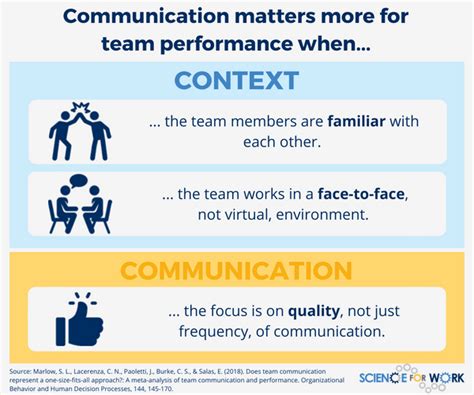Explore key techniques and fundamentals of lacrosse defense, from building team chemistry to evaluating effectiveness and analyzing opponents’ weaknesses.In the fast-paced world of lacrosse, solid defense is as crucial as offensive prowess. Fundamentals of Lacrosse Defense Strategies is your ultimate guide to mastering the art of defensive play, designed for players, coaches, and enthusiasts looking to elevate their game. This article will delve into the core principles that underpin effective defensive strategies, explore key techniques used by top defenders, and emphasize the importance of team chemistry in creating a cohesive defensive unit. Additionally, we’ll provide insights on how to analyze your opponents’ weaknesses and measure the effectiveness of your defensive game. Whether you’re preparing for a big match or simply looking to enhance your skills, this resource will equip you with the strategies necessary to safeguard your goal and outsmart rival teams. Let’s embark on this journey to become a formidable force on the defensive field!
Understanding The Fundamentals Of Lacrosse Defense
To excel in lacrosse defense, players must understand the fundamentals of defensive strategies and techniques. A solid foundation in these principles allows defenders to anticipate plays, react quickly, and execute their responsibilities effectively.
One of the primary objectives of defense in lacrosse is to limit the offensive player’s ability to take high-quality shots on goal. This can be achieved through a blend of physical positioning, communication, and tactical awareness. Here are some essential components to consider:
- Footwork: Quick and agile footwork sets the stage for effective defensive maneuvers. Players should practice lateral movement, backward running, and maintaining a low center of gravity to stay balanced and ready to react.
- Body Positioning: Proper body positioning is crucial in forcing offensive players towards less favorable angles. Players must learn to use their body to create obstacles while avoiding penalties.
- Stick Skills: A strong understanding of stick skills helps defenders to intercept passes and check opposing players without losing possession. Fundamentals such as proper grip and hand movement are essential.
- Reading the Offense: Effective defenders must be able to read the plays of the opposing team. Anticipating the offensive strategies allows for proactive defensive actions, such as doubling the ball carrier or sliding to support teammates.
- Communication: Constant verbal and non-verbal communication among teammates is critical. Defenders must call out assignments, alert teammates about slides or switches, and ensure everyone is on the same page.
By focusing on these fundamentals of lacrosse defense, teams can improve their overall performance on the field and develop a cohesive defensive unit that works together seamlessly.
Key Techniques For Effective Lacrosse Defense Strategies
To enhance your team’s overall performance, focusing on the fundamentals of effective lacrosse defense strategies is crucial. Implementing the right techniques can significantly impact the outcome of a game. Below are some key techniques that every lacrosse defender should master:
- Footwork: Agile and precise footwork is essential for maintaining balance and positioning. Defenders should practice lateral movements to stay in front of the offensive player, making it more challenging for them to pass or shoot effectively.
- Stick Skills: A strong grasp of stick handling is vital. This involves not just checking the opponent’s stick but also effectively using your stick to intercept passes or block shots.
- Body Positioning: Always position your body between the attacker and the goal. This not only limits the attacker’s options but also helps in making clean checks without committing fouls.
- Communication: Effective communication among defensive players helps in organizing and strategizing on the field. Call out plays and alert teammates about potential threats or switches in marking.
- Anticipation: Develop the ability to read the game and anticipate the moves of offensive players. By predicting their actions, defenders can position themselves better and react faster.
- Pressure and Containment: Both are essential tactics in lacrosse defense. Properly applying pressure forces attackers into making quick decisions, while containment ensures they are kept away from high-scoring areas.
By focusing on these techniques, defenders can enhance their effectiveness on the field, contributing significantly to the overall defensive strategy of the team. Mastering these fundamentals of lacrosse defense not only improves individual skills but also fosters a more cohesive unit on the field.
Building Team Chemistry For Strong Defensive Play
Creating a cohesive and effective defensive unit in lacrosse significantly relies on strong team chemistry. The fundamentals of teamwork extend beyond just understanding individual roles; players must develop trust and communication on the field. Here are some essential strategies to enhance team chemistry for a robust defensive play:
Effective lacrosse defense is a collective effort that thrives on the strength of team chemistry. By emphasizing these aspects within the coaching and training framework, teams can develop a more formidable defensive strategy that operates seamlessly during matches.
Analyzing Opponent Weaknesses In Lacrosse Defense
Understanding the strengths and weaknesses of your opponent is crucial to developing effective lacrosse defense strategies. Proper analysis not only informs your game plan but also enhances your ability to adapt during matches. Here are some key areas to focus on when evaluating your competitor’s weaknesses:
- Player Skill Levels: Assess the individual skills of opposing players. Identify those who may struggle with certain techniques such as passing, shooting, or dodging. This information is vital for creating targeted defensive assignments.
- Formation and Structure: Observe the opponent’s formation and how they utilize space. Some teams might favor a specific formation that can be exploited through strategic positioning of your defenders.
- Offensive Patterns: Look for trends in the opponent’s offensive plays. By analyzing their typical movements and plays, you can predict their next actions and position your defense accordingly.
- Communication Gaps: Watch for lapses in communication among the opposing players. Identifying a lack of coordination can provide opportunities for you to create turnovers or intercept passes.
- Weakness in Transition: Pay attention to how quickly the opponent transitions from offense to defense and vice versa. Teams that struggle in this area can be vulnerable to fast breaks and counterattacks.
- Physical and Mental Fatigue: Monitor the opponent’s fatigue levels, especially later in the game. Capitalizing on tired players can lead to significant advantages in defensive play.
By focusing on these aspects, teams can leverage the fundamentals of lacrosse defense strategies to exploit opponent weaknesses. This knowledge not only empowers defenders to make informed decisions during play but also strengthens the overall team cohesion as they work together to neutralize threats on the field.
Measuring Success: Evaluating Your Defense’s Effectiveness
Evaluating the effectiveness of your lacrosse defense is crucial for understanding the fundamentals of defensive strategies in the game. The assessment can help teams identify strengths and areas for improvement. Here are several key metrics and methods to consider when measuring your defense’s success:
1. Goals Against Average (GAA)
- This metric measures the average number of goals conceded per game. A lower GAA indicates a stronger defense and the ability to limit scoring opportunities for the opponents.
2. Turnover Ratio
- Tracking turnovers both forced by the defense and committed by the offense can provide insights into defensive pressure and effectiveness. A higher turnover ratio suggests that the defense is actively disrupting the offense.
3. Time of Possession
- Assessing how much time your team maintains possession in comparison to the opponent can impact defensive stamina. If your defense is frequently on the field, it may lead to fatigue and poorer performance.
4. Save Percentage
- The percentage of shots on goal that the goalie saves is a critical indicator of defensive performance, as it reflects both the effectiveness of the defense and the ability of the goalie to handle challenging situations.
5. Shot Quality Against
- Evaluating the quality of shots taken by the opposing team can indicate how effectively the defense is limiting scoring opportunities. Defensive strategies should aim to force lower-quality shots from unfavorable angles.
6. Zone Performance
- If your team employs a zone defense, assess how well the defense maintains its structure and prevents offensive players from penetrating through the zones.
7. Communication and Cohesion
- Effective communication among defenders is pivotal. Regular feedback on defensive alignments and player accountability can enhance overall defensive performance.
By systematically evaluating these metrics, teams can gain valuable insights into their defensive capabilities, allowing for targeted improvements and strategy adjustments. Understanding the fundamentals of effective lacrosse defense enables teams to build resilience and achieve success on the field.
Frequently Asked Questions
What are the key principles of lacrosse defense strategies?
The key principles include communication, positioning, and understanding the strengths and weaknesses of both the defending team and the offense.
How can a defenseman effectively mark their opponent?
A defenseman can effectively mark their opponent by maintaining proper body positioning, using their stick to disrupt passing lanes, and staying aware of the ball’s location.
What role does communication play in a lacrosse defense?
Communication is crucial in lacrosse defense to ensure all players are aware of their responsibilities, to call out switches, and to maintain a cohesive defensive unit.
What are some common formations used in lacrosse defense?
Common formations include the man-to-man defense, zone defense, and a slide-and-recover strategy, each suited for different game scenarios.
How can defenders anticipate the offense’s moves?
Defenders can anticipate the offense’s moves by studying their patterns, recognizing key indicators in player movements, and being familiar with their offensive plays.
What is the importance of physical conditioning for lacrosse defenders?
Physical conditioning is vital for defenders to maintain stamina, agility, and strength throughout the game, enabling them to effectively counter faster and stronger offensive players.
How can a defender improve their skills during practice?
Defenders can improve their skills by practicing one-on-one drills, studying game film for situational awareness, and refining their stick-handling and footwork techniques.









